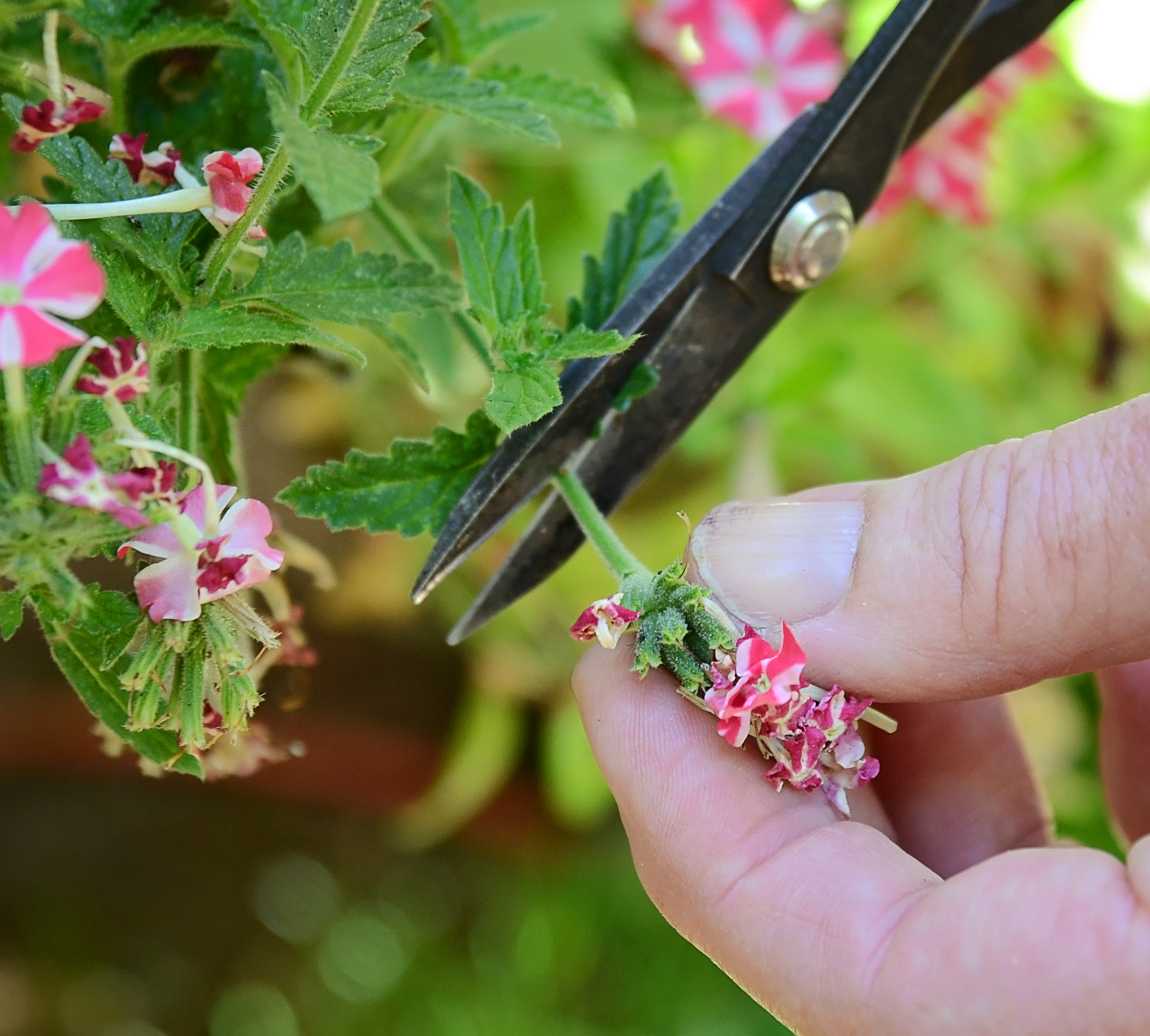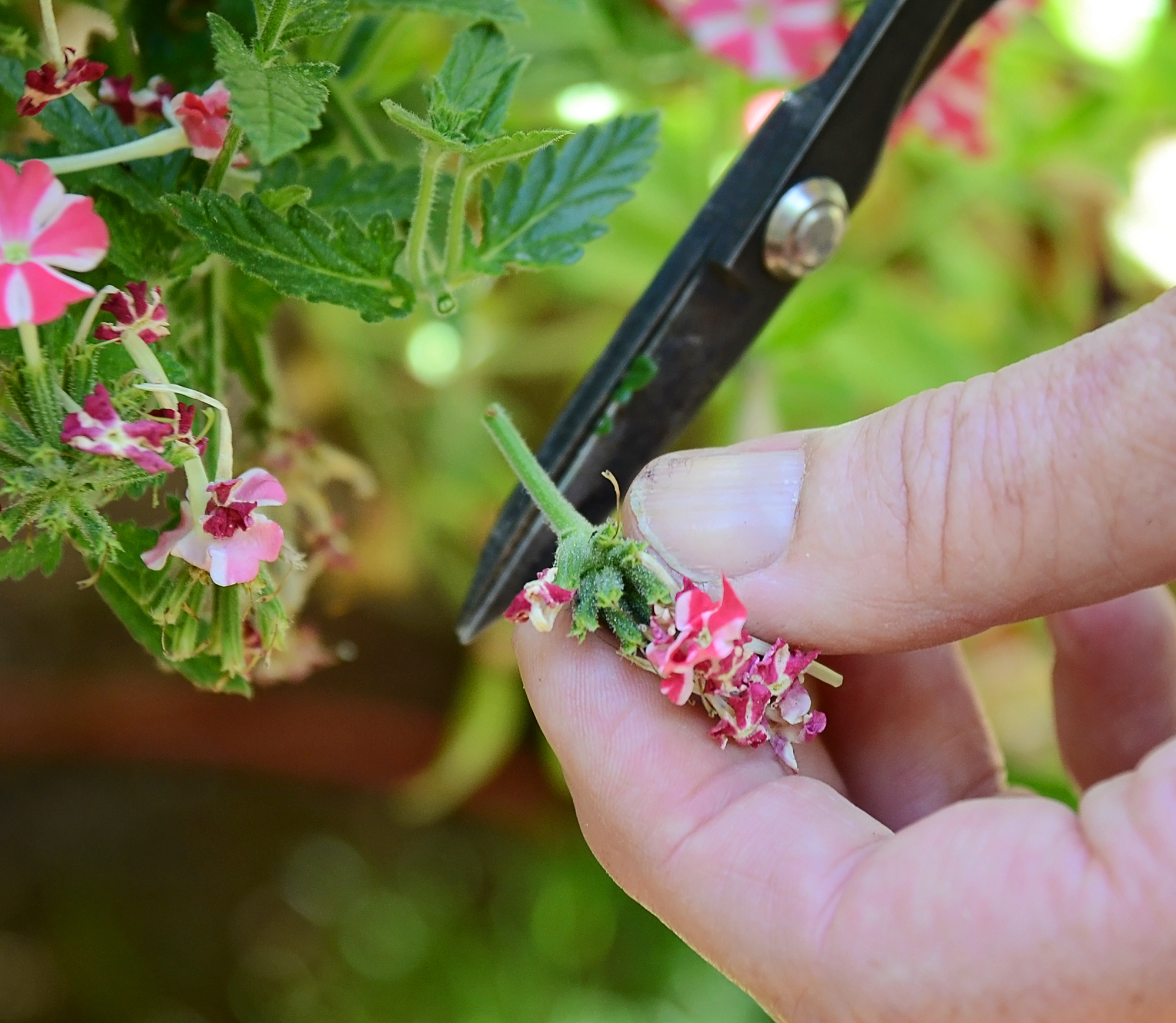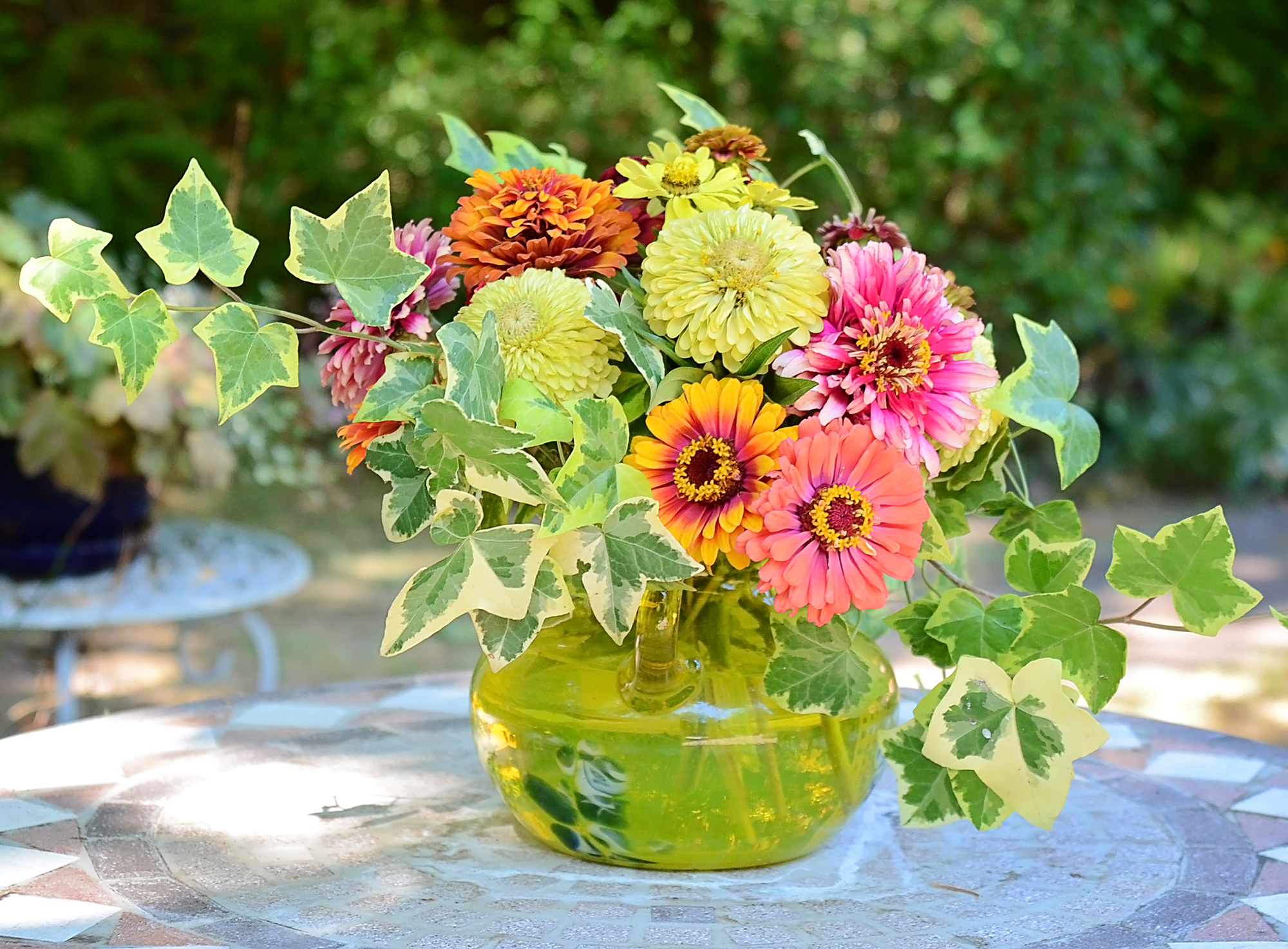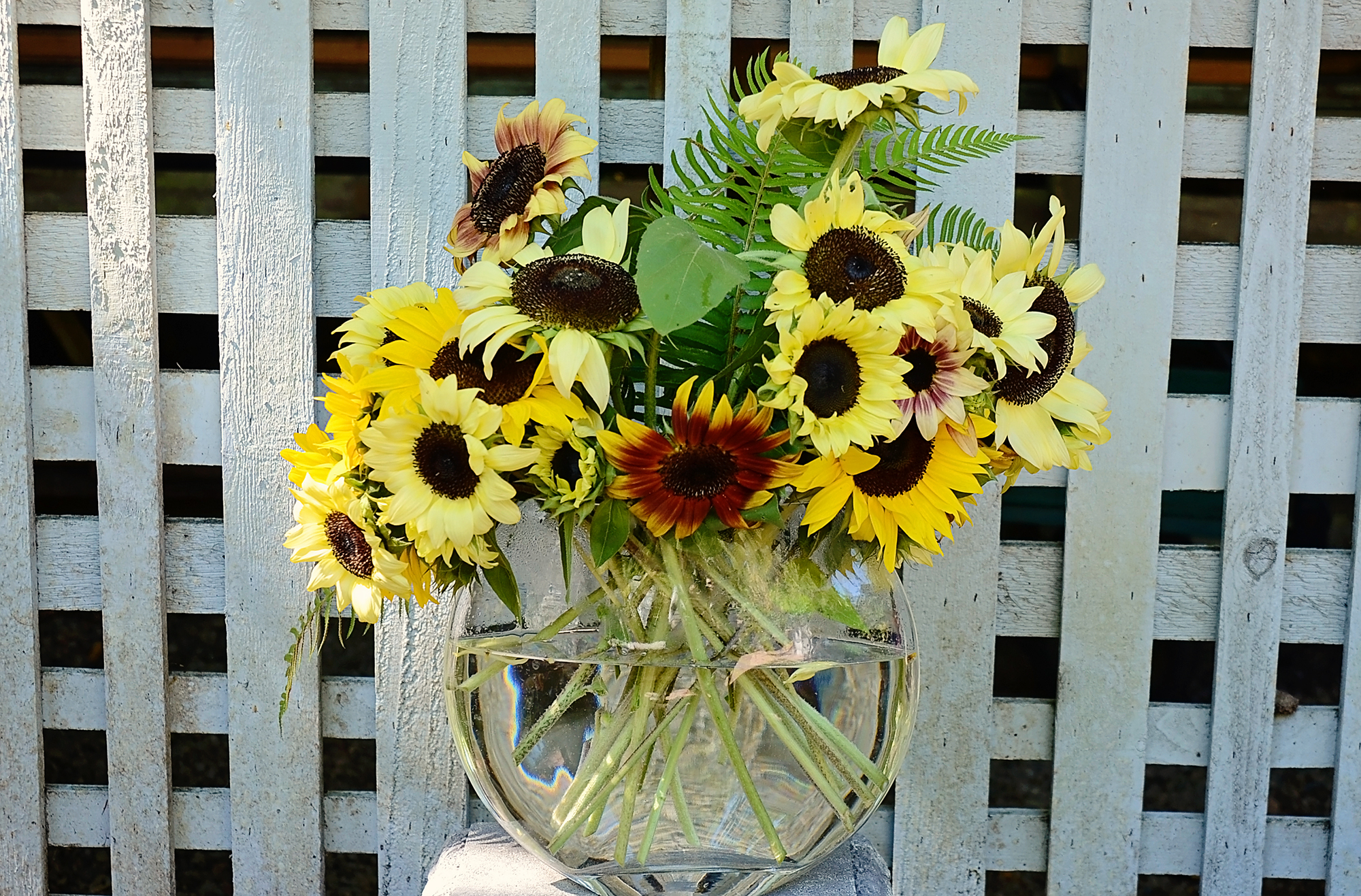Flower Power: Tips for beautiful flowers in and out of the garden.
Tips to keep your flowers blooming in the garden:
- Deadheading: To ensure your flowers continue to bloom it is important to remove blooms from the plants as they begin to fade. This simple procedure stimulates the plant to produce additional blooms. Removing spent flowers before the seed develops sends a message to the plant that it needs to produce more blooms to successfully reproduce. It can be accomplished by either pinching the blooms off or by regular cuttings of the blooms for bouquets.
- Many annuals are rejuvenated when the stems are cut back about midsummer to encourage new growth and additional flowering.
- To encourage full healthy plants, pinch or remove any leggy stems.
- Most flowering annuals benefit from regular applications of bloom-boosting fertilizer. For containers, a convenient method is to mix water soluble fertilizer in a bucket and use the solution each time you irrigate. In beds and landscapes, a slow-release fertilizer added to the soil can help feed the plants through the blooming season. Look for fertilizers with a higher second number in the N-P-K listing, corresponding to phosphorus. If you find your plants produce lush foliage and few or no flowers, they may be receiving too much nitrogen (the first of the N-P-K numbers). Boost the phosphorus to encourage blooms.
- Plants require adequate light to have the energy to produce flowers. Make sure your blooming plants are situated in an area with proper exposure. Typically ‘full sun’ means at least 8 hours of sun per day.
Tips to keep your cut flower bouquets fresh and beautiful:
- Be sure to use sharp shears or a knife to cut the flowers. Scissors are not recommended as the blade is typically designed to cut through very thin material like paper and fabric, not items as thick as flowers. The scissors will pinch the stem, crushing the veins in the cutting process. This prevents the flower from absorbing water and nutrients and results in a shorter vase life.
- Always cut on an angle, as it exposes more surface area.
- It is best to cut the stems in the early morning hours or in late afternoon when the air temperature is cooler.
- Have a bucket of water ready when you cut the stem off the plant. Minutes do really matter and the faster it is placed in the water the longer the plant will last.
- Give each stem a fresh cut when you place it in the vase. By changing the water and giving your flowers a fresh cut each day or so, you’ll extend the life of your arrangement.
- Make sure and cut the flowers at the correct time to get the most enjoyment from the bloom. Cut roses, irises, daffodils and gladiolas in bud stage. Marigolds, dianthus, and delphiniums should be open. For the best quality fresh flower arrangements, choose blooms at or before their prime.
- Remove any leaves that will be under the water in the vase.
- Place flowers in lukewarm not cold water.
- A drop or two of liquid chlorine bleach in the vase will keep the water clearer, longer. (By drop or two we actually mean…a drop or two! Using too much can cause your flowers to wilt faster).
- There are many home remedies out there but cut flower food does seem to work the best at keeping flowers looking their best longer. Follow the manufacturers’ directions for mixing the food.
These are just a few of the ways we have found to keep flowers blooming and to keep them fresh once cut. We use these methods in our flower trials as well as in our own gardens at home. Feel free to add your tips and suggestions in the comments section!
Authors: Camille S. & Kat B.









